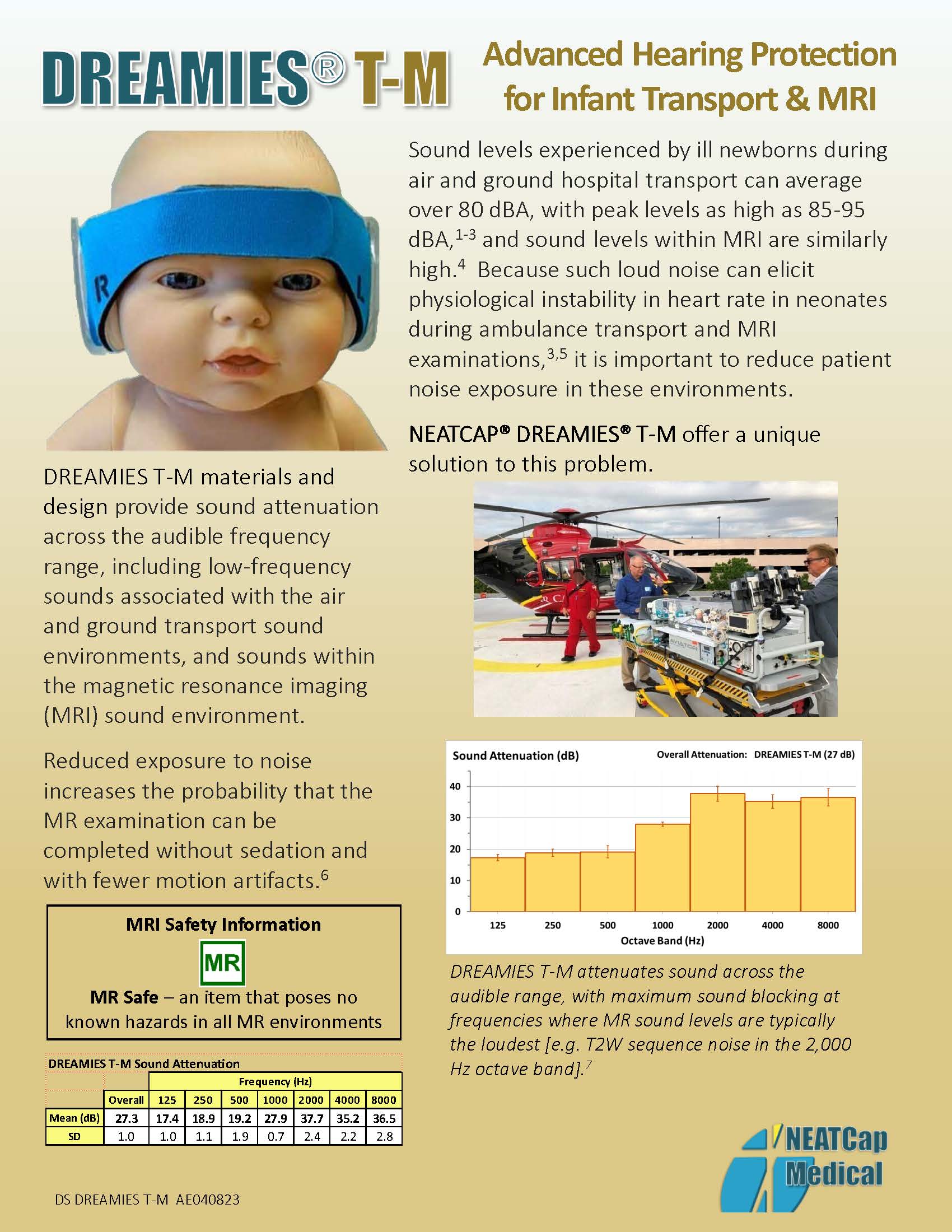DREAMIES T-M: Infant Hearing Protection for Emergency Transport.
Clinical study results showed neonates who wore DREAMIES T-M had stable vital signs, and were calm without visible signs of distress during air and ground ambulance transport. See Penoyer et al (2023).
DREAMIES T-M: Infant Hearing Protection for Emergency Transport
Blocks critical low-frequency noise and provides a quiet environment which may help maintain physiological stability during air and ground transport.

Noise Exposure during Transport
Annually in the U.S., about 70,000-80,000 neonatal patients are emergency-transported to hospital NICUs by helicopter, ambulance, and fixed-wing aircraft [T1].
Sound levels experienced by ill newborns during fixed-wing, helicopter, and ground transportation can average over 80 dBA, with peak levels as high as 85-95 dBA [T2-5], greatly exceeding the recommended guideline of the maximum sound level of 60 dBA inside transport incubators [T6, T7].
High sound levels during air and ground ambulance transport have been associated with increased heart rate in neonatal patients during ambulance transport, a potentially adverse change that may reflect increased stress [T5]. Because of the association between loud noises and physiological instability [T5], it is important to reduce patient noise exposure during ambulance transport.
Unfortunately, conventional earmuffs do not properly fit neonates and small infants and do not block a significant amount of low-frequency noise that dominates transport, so their effectiveness is limited for this population.
To address this need, DREAMIES T-M are uniquely designed with Form, Fit and Function to provide a comfortable acoustic environment for neonates and infants during hospital transport.
DREAMIES T-M block noise across the full spectrum of sound, including the critical low-frequency engine and road noises that dominate the transport environment.
Clinical Results: Neonatal Transport with DREAMIES T-M
In a recent neonatal transport study, DREAMIES T-M were found easy to apply, position stable, and did not interfere with care. Neonates wearing DREAMIES T-M were generally calm without visible signs of stress; vital signs and measures of neonatal stress were stable across the transport period [E14].
Results Include:
- 49 neonatal patients studied
- Vital Signs and stress measures stable
-
Neonates calm without visible signs of
stress during transport - No sedation used
DONNE Measurements of Transport Noise with and without DREAMIES T-M
DREAMIES T-M performance in actual transport sound environments has been proven with DONNE — Detector of Neonatal Noise Exposure — a unique acoustic test model that measures what an infant actually hears in different critical care situations.
In collaboration with our clinical partners, DONNE has ridden in over 40 outbound helicopter and ground transports while continuously recording sound (noise) both inside and outside a transport incubator.
Analysis of DONNE recordings revealed that both air and ground transports are very loud and dominated by low-frequency noise less than 300 Hz. Such low frequency sounds are often difficult to block using conventional small earmuffs.
Typical sound frequency spectral analyses shown below illustrate the large difference in sound detected by DONNE without protection (Open Ear) and with DREAMIES T-M protection.





